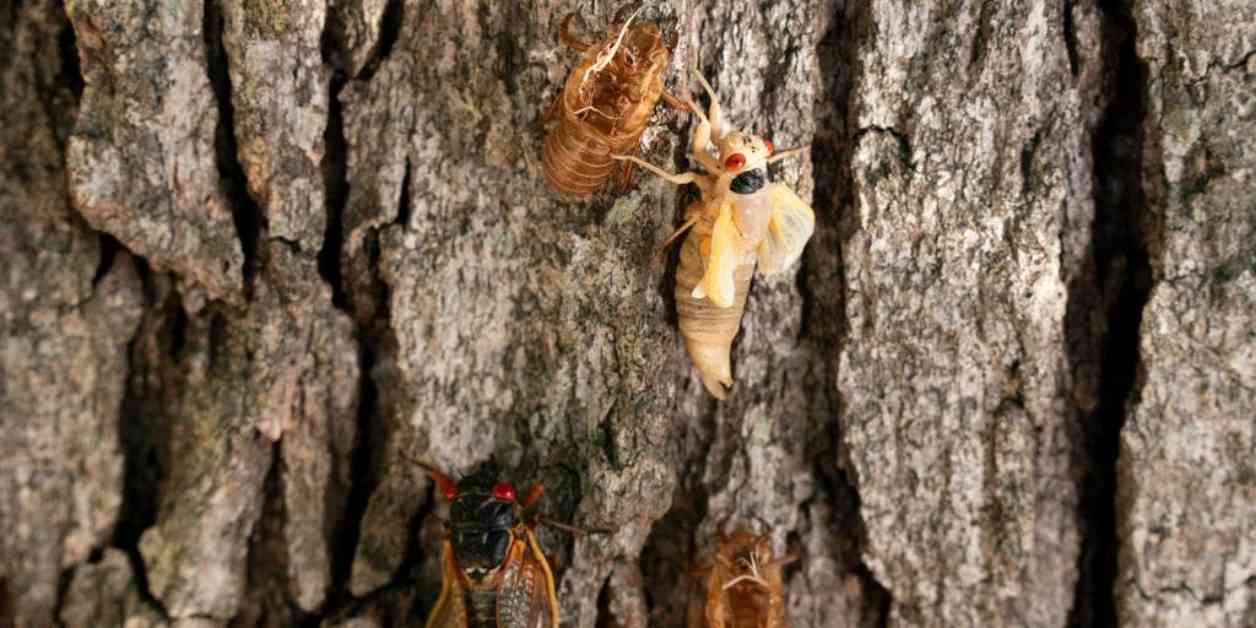The cicada invasion has begun, with these noisy insects emerging from the ground in North Carolina and South Carolina and set to appear in 15 other states. These bugs, which are one to two inches long, are growing wings as they prepare for a mating frenzy that will last for several weeks. Billions, if not trillions, of cicadas from two different groups will be making their presence known across 17 U.S. states, marking a rare natural event not seen since 1803.
This year, two types of cicadas, brood XIX and brood XIII, have risen from the ground simultaneously for the first time in 221 years, a phenomenon that is not expected to repeat until 2244. These insects have robust bodies, large red eyes, and membranous wings with a wingspan of three inches. The emergence of these cicadas will cover parts of various states, including Alabama, Arkansas, Georgia, Iowa, Indiana, Illinois, Kentucky, Louisiana, Maryland, Missouri, Mississippi, North Carolina, Oklahoma, South Carolina, Tennessee, Virginia, and Wisconsin.
Cicadas are fascinating creatures that spend 13 or 17 years underground before emerging. They are not harmful to humans, pets, gardens, or crops, and are a valuable food source for birds and mammals. Native Americans historically consumed cicadas for their protein-rich qualities.
The peak activity period for cicadas is from now through early June, triggered by rain and a ground temperature of 64 degrees. These insects shed their skin, mature into adults with wings, and take to the trees to mate. The loud mating calls can reach up to 120 decibels, comparable to the noise level of a gas-powered lawnmower or motorcycle.
However, the mating cicadas will eventually die, leaving behind their carcasses. Homeowners are advised to take precautions to protect young trees from egg-laying females and to cover pools and patio furniture to prevent cicadas or their droppings from causing damage.
Brood XIII cicadas follow a 17-year cycle and are mostly found in northern Illinois, eastern Iowa, southern Wisconsin, and some parts of Indiana. On the other hand, Brood XIX emerges every 13 years in a wider range of states, totaling 15, with potential interbreeding between the two broods occurring in central Illinois and Indiana.
This year’s cicada emergence is a unique and captivating event that showcases the wonders of nature. As these insects make their presence known across the eastern United States, it is a reminder of the remarkable cycles and phenomena that exist in the natural world.




